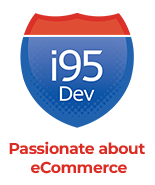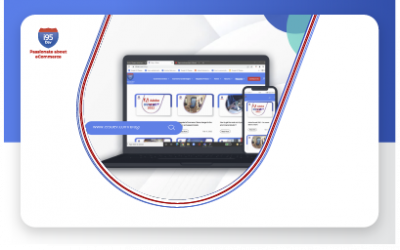No trend is more pertinent than cloud computing. Cloud is the sole driver of the app-dependent tech ecosystem that is vital in helping businesses monitor the dynamics. All business services. from working from home to contact tracing to client deliveries are revolutionized by cloud services.
As COVID-19 continues to take a toll on businesses in 2021, the latter looks to lay a foundation for accelerating agility. Dustin Milberg, the field chief technology office for cloud services at
InterVision
states that cloud computing will be the primary emphasis of organizational goals, considering its advantages including accessibility, flexibility and scalability.
Besides, upcoming technologies are paving the way for easy data processing and analysis for more effective business operations. These operational demands cause businesses to leverage cloud computing.
Here are some of the cloud computing trends worth noting in 2021:
Artificial Intelligence
Artificial intelligence (AI) involves leveraging computer systems to imitate the decision-making and problem-solving capacities of the human mind.
AI will boost the success and speed of cloud computing. Cloud-enabled service platforms empower users on any budget and with any skill level to access input data like recommendation engines, image recognition models and language processing. Cloud continues to allow such revolutionary modules to become more widely used by all kinds of corporations, guaranteeing high productivity and efficiency.
Machine learning also plays a huge role in the logistics process that regulates cloud data. Cooling tools, power usage and hardware networks in these expensive environments can be monitored and maintained by AI algorithms to systematize operational efficiency and reduce their influence on the environment.
Cloud computing systems are already implementing AI tools to assist with particular concepts of the data process. For instance, in banking, even the slightest financial corporation may need to keep tabs on thousands of daily transactions.
AI tools can therefore help facilitate the way information is ingested, managed and updated so financial institutions can provide more accurate real-time services to customers.
Hybrid and On-Premise Cloud Solutions
A hybrid cloud is defined as a cloud processing environment that applies a combination of on-premises, third-party and private cloud, public cloud services with interpretation between the principles.
Hybrid and on-premise cloud solutions continue to increase. As cloud ecosystems gain popularity, many enterprises discover that there’s no ultimate solution for their operations.
Hybrid and multi-cloud environments where consumers select the individual aspects of service providers’ facilities that meet their needs have increased in fame, leading to a case where such providers have started to re-evaluate their delivery models.
Today, it seems that service providers such as Google, Amazon and Microsoft have realised the importance of various approaches including utilizing the public cloud to offer content delivery while processing and storing client information and other monitored data via private or on-premise solutions.
We also predict a growing demand for “bare metal” cloud space raw cache and computer faculty where corporations can transfer their existing systems into the cloud without adapting them to run on pre-installed services or software.
The need to combine such user needs will be a driving tool behind the motion whereby cloud services change throughout 2021.
Multi-cloud Systems
Multi-cloud entails the practice of utilizing services from several heterogeneous cloud service providers such as Microsoft Azure, Amazon Web Services (AWS) or Google Cloud Platforms not forgetting specialized software-as-a-service (SaaS), infrastructure-as-a-service (IaaS) or platform-as-a-service (PaaS) providers. Moreover, multi-cloud consists of hybrid cloud environments and private cloud environments that support several public cloud platforms. In architecture, multi-cloud is applied for various reasons such as disaster recovery.
Multi-cloud approaches quickly break down barriers between providers. The industry is prevalently turning to hybrid environments with regulations for infrastructure set to be distributed across multiple templates.
Adopting this collaborative approach enables customers to take advantage of the fast-expanding multi-cloud trend. It also benefits organizations needing to deploy information and interact with business partners.
This space is likely to promote increased levels of innovation from emerging businesses, creating services that decipher the operational process between several public cloud platforms.
Serverless Computing
Serverless computing is a cloud enumeration model that offers computing solutions on-demand and deploys all functionalities for common infrastructure management roles like patching, scaling and scheduling to cloud tools, enabling engineers to direct their effort on business-specific goals.
In recent years, the cloud industry has undergone a huge change with the transformation of serverless computing. In 2014, Amazon Web Services (AWS) commercialized and unveiled ‘AWS Lambda’, a serverless computing technology , so AWS comes first when referring to cloud services.
Other big tech firms such as IBM, Google and Microsoft have begun to explore this newly developed cloud technology. After AWS, Microsoft holds second place for serverless cloud infrastructure by enacting services similar to AWS Lambda.
Intuz is an AWS certified cloud service provider that assists companies to increase their business automation and adaptation by using updated AWS services.
Virtual Cloud Desktops
Virtual cloud desktop is where the workstation environment is delivered as a managed cloud service to employees’ laptops where they work.
This empowers companies to take advantage of hourly subscriptions for the time their employees spend working on their desktops, cutting back the cost of hardware updates and the need to get rid of disposable technology.
This computing model is provided by Amazon via Microsoft with Windows Virtual Desktop and Workspaces platform. Google also avails this functionality through its Chromebook scheme.
The benefit of desktop-as-a-service is that it promotes efficiency across the labour force by ensuring that all employees are using updated synchronized technology.
Furthermore, it offers security benefits as all devices are monitored in a centralized manner instead of ensuring everyone on the network is merely following the best practice.
When people join or leave the team, the cost expands as the number of hours spent on the platform increases or reduces. This malleable process means virtual desktop services are likely to become more widespread in the future.
Conclusion
These cloud computing trends are prevalent and will only continue to evolve at a greater speed as adoption increases and overhauls the cloud to gain more insight. Making use of these trends will help your enterprise leverage more expertise and knowledge of the industry.
As the world continues to welcome cloud services, these open doors guarantee sustained growth in 2021 and future years.
We offer support services at every stage of your cloud migration journey through our 6 step process that guarantees an easy, fast and smooth transition to the cloud.
Call us today to book your appointment.
Recent Blogs
22 benefits ecommerce home decor furniture businesses
22 Benefits of eCommerce for Home Décor and Furniture Businesses Author Category Share Home décor and furniture businesses are increasingly turning to eCommerce to elevate their operations...
Home Improvement Industry: 11 Key eCommerce Features Consider
Elevating Home Improvement eCommerce: 11 Must-Have Features for a Seamless Shopping Experience Author Category Share In the dynamic landscape of home improvement, furniture, and lifestyle,...
Complete Guide to Automotive eCommerce Growth, Trends, Challenges, Solutions
A Comprehensive Guide to Accelerate Your Automotive Business Growth with eCommerce Author Category Share Introduction The automotive industry has undergone a significant transformation in...




